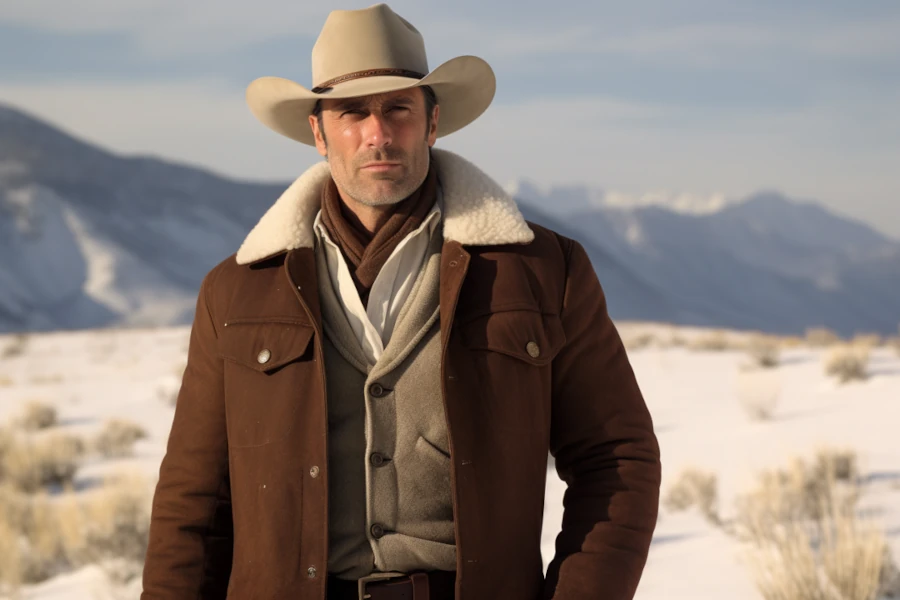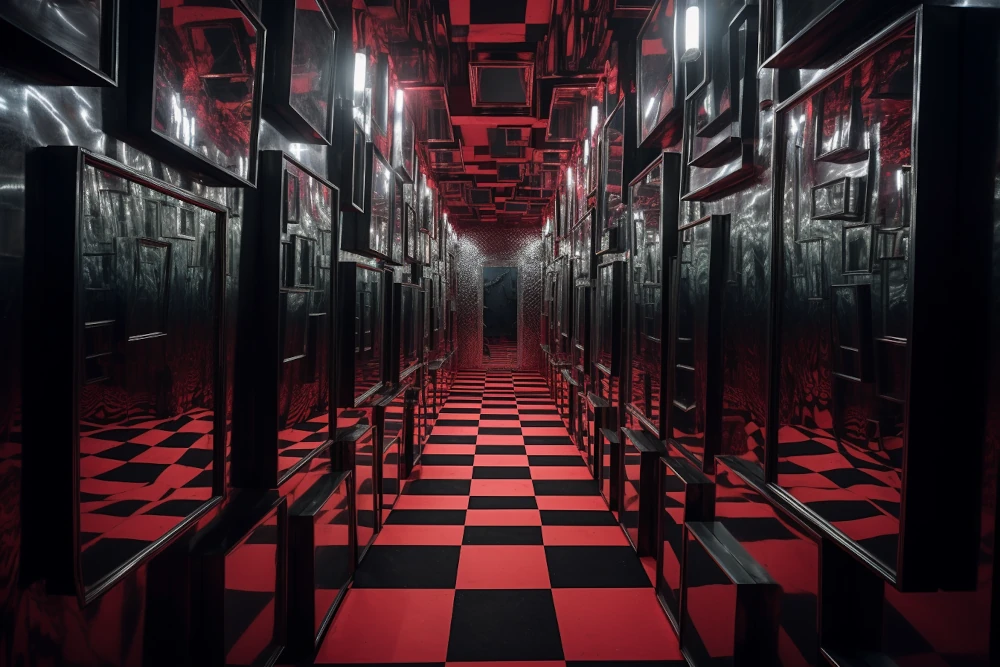The Ku Klux Klan in Film
Watching BlacKkKlansman, I was struck by how different it was from other films involving the Ku Klux Klan. Then, as I attempted to elaborate upon this thought, it struck me that I hadn’t actually seen many films about the KKK. I was even more surprised to see that TV Tropes lists fairly few films involving the Klan.
More often than not, the Klan appears in comedies, usually copying a famous scene from Blazing Saddles where the protagonists, disguised as Klansmen, must navigate a Klan meeting. Oh Brother, Where Art Thou comes to mind, although filmmakers usually handle this plot device much less artfully. Harold and Kumar Escape From Guantanamo Bay comes to mind. Is the gag satire or mere slapstick?
The KKK also shows up in movies when a film requires a random villain needing no explanation. Tarantino demonstrates this clumsy and lazy handling of the Klan in Django Unchained, but it follows his weird penchant for finding ways to justify violent revenge on film. In this way the Klan functions the same way Nazis do in Indiana Jones or faceless henchmen in super hero films. As with comic mishandling of the subject matter, turning the Klan into an inhuman super villain avoids the most despicable truth: Ku Klux Klan members are people.
On the other end of the spectrum, we have films that attempt a hyper-realistic approach: Mississippi Burning, A Time to Kill, and American History X. These are the films that I thought of while watching BlacKkKlansman. Of them, only American History X acknowledges the humanity of the villain. Mississippi Burning and A Time to Kill follow the blueprint of To Kill a Mockingbird, portraying racists as so painfully stupid or innately evil as to wholly lack humanity. Spike Lee is both too cynical and too empathetic to accept such a view. He knows that we cannot dismiss racists as merely those people who are unlike us. We attempt to dehumanize racists not because they are inhuman, but because acknowledging their humanity requires accepting our commonalities.
BlacKkKlansman
BlacKkKlansman tells the story of Ron Stallworth (John David Washington), a black Colorado Springs undercover police detective who infiltrates the KKK. The gist of the story is true, but Lee has reshaped the story to fit a conventional story arc. Stallworth must deal with racism within the police department, but he also complies when assigned to attend an event headlined by civil rights activist Kwame Ture (Corey Hawkins). There he meets Patrice Dumas (Laura Harrier), president of the Colorado College Black Student Union and coordinator of the event. She quickly becomes a love interest but Stallworth lies about his profession, knowing that Dumas would not approve.
Stallworth infiltrates the KKK on a whim when he responds to a Klan recruitment ad in a local newspaper. He just picks up the phone and makes the call, using his real name. This places the department in a predicament as they decide to turn it into a real investigation. The Klan wants to meet Stallworth after extensive discussions with him over the phone, but the black Stallworth cannot meet the Klan. This is no Dave Chappelle sketch, after all.
Stallworth uses a colleague, Flip Zimmerman (Adam Driver), as his stand in for face-to-face meetings. The Jewish Zimmerman is used by Lee to explore various themes. Zimmerman, neither particularly religious nor concerned with his Jewish identity, must not only confront the fervent antisemitism of the Klan, he must reevaluate his position in the world. Flip has to persistently deny his Jewish heritage in the face of accusations by a particularly suspicious Klansman.
On the other hand, unlike Stallworth, Zimmerman has had the luxury of ignoring racism until this point. He’s not unmistakably Jewish—which obviously wouldn’t work for the plot—so antisemitism never directly affected him. This highlights both the absurdity of the Klan’s racism—dedicated to the hatred of a people they often cannot even recognize—and a greater hurdle the black community must face. Branded by skin color, they never go unnoticed by racists.
Unmistakably Spike Lee…at Times
Oftentimes Lee uses dialogue to navigate tensions and underlying themes. For example, Zimmerman expresses his internal conflict with his Jewish identity through exposition. Likewise, Stallworth and Dumas’ conflicting ideas of what it means to fight racism come to a head in heated argument. These scenes are typical for Lee, and they have always been the weakest parts of his films.
On the other hand, Lee shines when he finding creative ways to make his points. The Kwame Ture speech is perhaps the strongest scene in the film. Although the words of Ture are even more direct and on-the-nose than the aforementioned conversations, Lee uses clever camerawork and direction to visualize an internal conflict arising in Stallworth. He both agrees and disagrees, feels unity with the speaker and audience while working as a mole against them. What is he thinking? It’s too bad that he so directly answers this question with dialogue.
The conventional narrative largely detracts from the character development. The case has to move forward and it seems to require a major confrontation where the cover gets blown. In a weird way, BlacKkKlansman is similar to early Adam McKay films like Anchorman and Talladega Nights. Early on the interplay between theme, character, and plot works out exceptionally well, but the further things move along plot takes more precedence. Eventually, the plot points become such strong pivots that you become conscious of them.
Spike Lee’s Unique Take on the Klan
There’s a fantastic scene in BlacKkKlansman where a Klan member, Felix (Jasper Pääkkönen), lays in bed with his wife, Connie (Ashley Atkinson), plotting a violent attack she will execute. She tells him how grateful she is to have met him, how their mutual hatred for blacks and Jews has given her life meaning. Spike Lee is not sympathizing with these people, but it could be said that he empathizes with them. It’s the same type of empathy Mel Brooks displayed in Blazing Saddles when Gene Wilder delivered this line:
What did you expect? “Welcome, sonny?” “Make yourself at home?” “Marry my daughter?” You’ve got to remember that these are just simple farmers. These are people of the land. The common clay of the new West. You know…morons.
Lee goes to great pains to understand his antagonists, but in no way does he remain neutral. To do this, he acknowledges the different perspectives and motivations among the Klan members. Felix and Connie find purpose in hatred. It gives them a sense of value they would probably lack without others to look down upon. It provides a sense of reassurance that they are not at the bottom of the social hierarchy. Allowing hatred to become their passion, the couple gravitates toward violence.
Local Klan leader Walter (Ryan Eggold) takes a more pragmatic perspective. He wishes to reinforce institutional racism because of the economic and political benefits it accords white people. He discourages overt violence not for moral reasons, but because he recognizes how damaging such acts can be to his cause. While Felix presents the immediate threat of violence, Walter is much more dangerous because he seeks to harness racist systems for sustained terror rather than acute acts of violence.
Grand Wizard David Duke (Topher Grace) aligns much closer to Walter than Felix, but where Walter genuinely seems concerned with white supremacy, Duke appears to be driven by ego. You’re left to constantly wonder whether he genuinely cares about this whole white supremacy thing or if he just found a social group he could exploit for personal gain. Duke is a cult leader. He attempts rebrand white supremacy as something other than racist while simultaneously leveraging the support of the most ardent racists in America. Undoubtedly Duke harnesses racist sentiments, but it can’t be a coincidence that his strategy just so happens to be “enrich David Duke and grant him political power.” Like with most cults, the disciples have more faith than the leader.
Then there’s Ivanhoe (Paul Walter Hauser). This man does practically nothing of consequence. He’s always just there. And he’s always drunk. At first glance, Ivanhoe fills the role of a mindless evil lackey. While Ivanhoe presents an unwavering commitment to the cause, he never provides the audience with a moment of introspection or reveals some history or ambition that fuels his hate. Instead, we can only surmise that Ivanhoe is just going along with his drinking buddies. Without the grand dreams of Duke or the social goals of Walter or the sense of purpose of Felix, Ivanhoe represents the scariest of all ideologues: the one who can never be brought to question the ideology because it’s just a thing he accepts to belong to a social group. For him, the Klan is simply something to do.
The characters in BlacKkKlansman emphasize the heterogeneous nature of America. Thinking in terms of good and evil, light and dark, white culture and black culture, or any other duality fails. Duality presents a more comprehensible world, and that comprehensibility can entice those looking for answers into abhorrent ideologies. The Klansmen have fallen prey to reductive ideas that ignore the multiplicity of human nature, experiences, and motivations. Lee combats this duality by shining a light on the diversity within the Klan itself—a diversity it attempts to stomp out through rituals and garb and common enemies, but a diversity that persists nonetheless. Oddly enough this diversity has roots in the one commonality that extends beyond race, ideology, culture, or any other identifying factor. It’s borne out of our humanity. Recognizing that humanity shatters every premise the Klan was built upon.
The Big Picture
There are so many pieces to BlacKkKlansman, so much good and bad, it’s difficult to evaluate. Lee does not look at these events as mere historic artifacts—he very deliberately draws parallels to contemporary issues. The characters all contribute to Lee’s central thesis, but the dialogue oscillates between extremely strong and extremely weak. The plot breaks with its source material to make things more Hollywood-friendly, but Lee overdoes it and the perfect alignment of formulaic plot points ruins any illusion of fidelity to the truth.
At times, Lee himself paints with too broad a brush. Although the police chief who greenlights Stallworth’s investigation presents an interesting amalgam of motivations and beliefs, Lee creates a caricature for Stallworth’s racist adversary on the force. His comeuppance might be the most cringeworthy and cheesy scene in the movie.
BlacKkKlansman is an imperfect film, but it is not mediocre. Its strengths are really strong. Its weaknesses are really weak. For the strengths, you should watch it.




